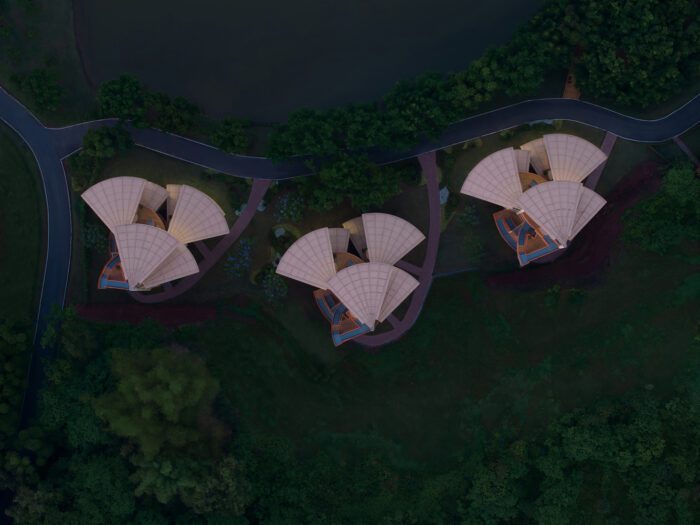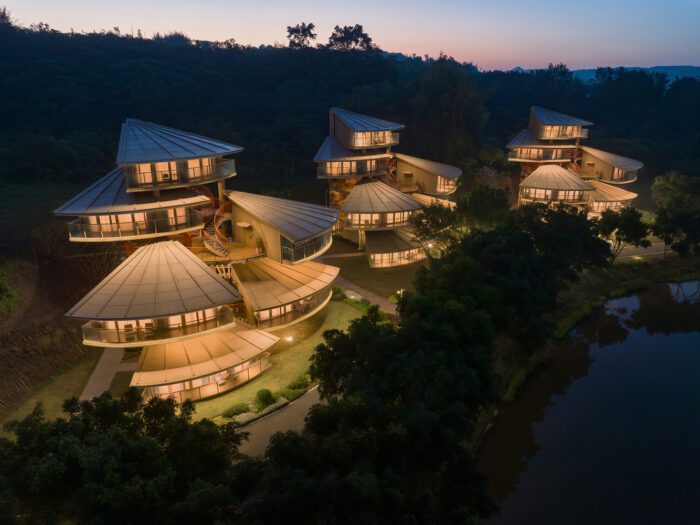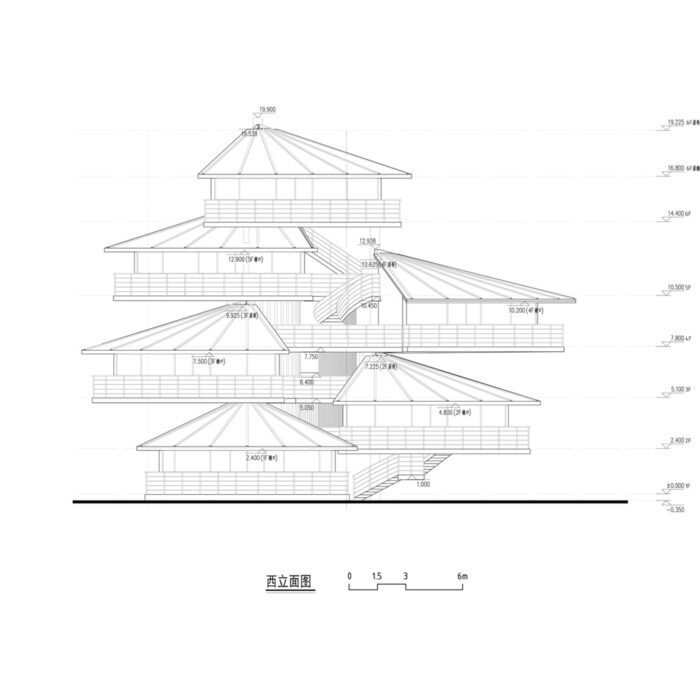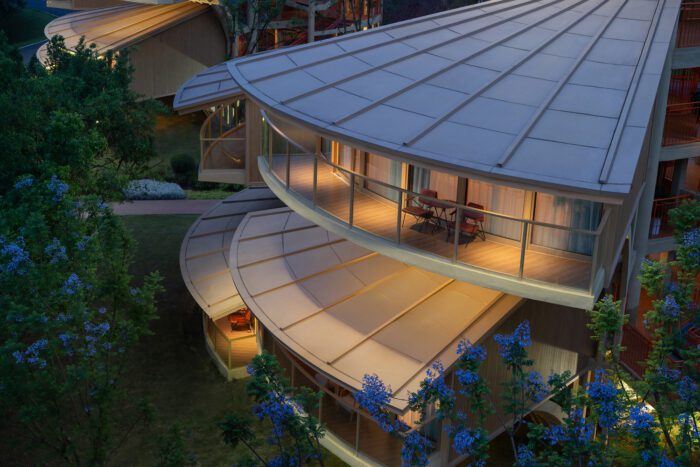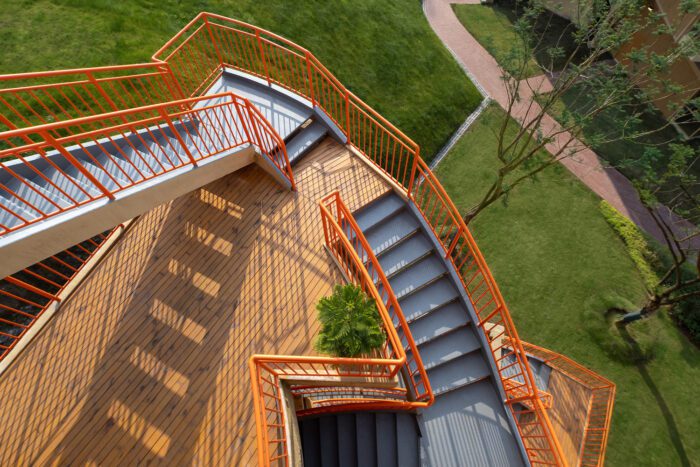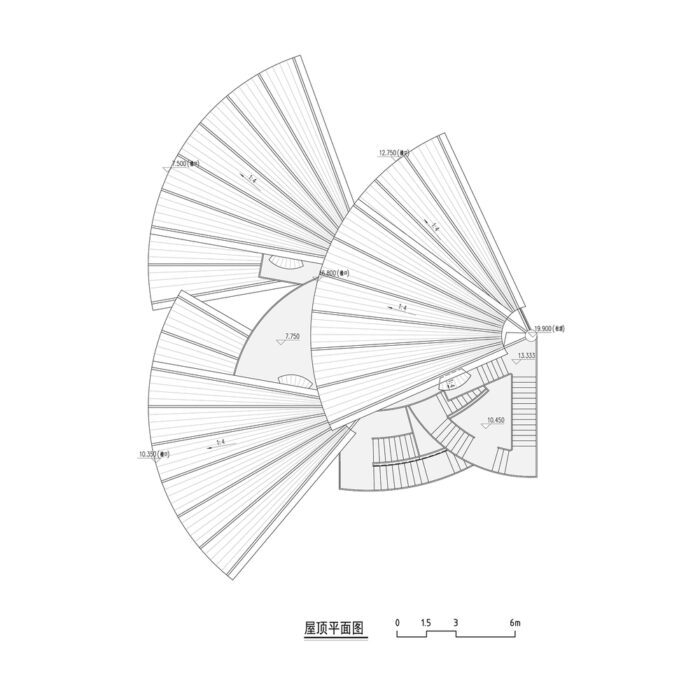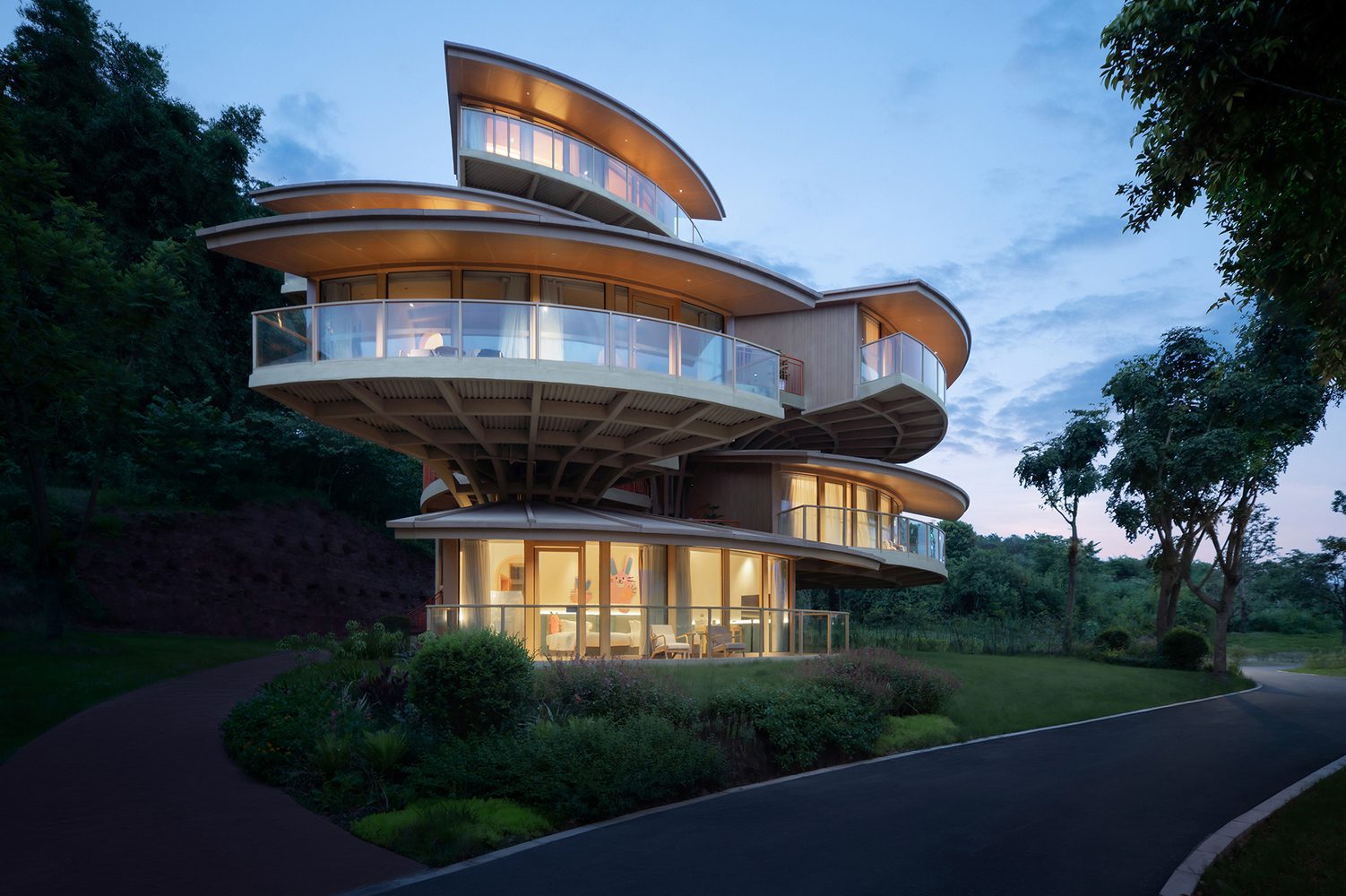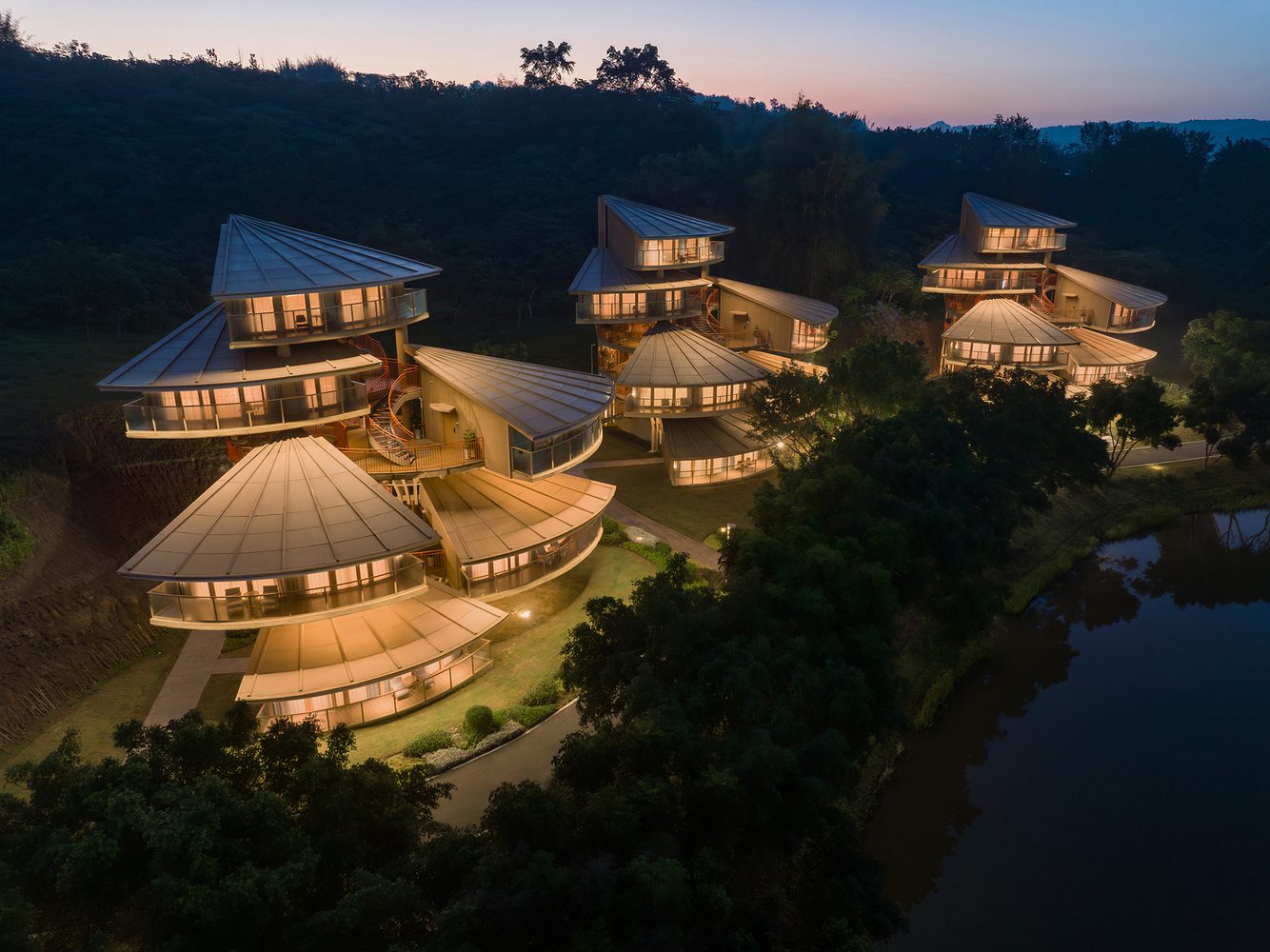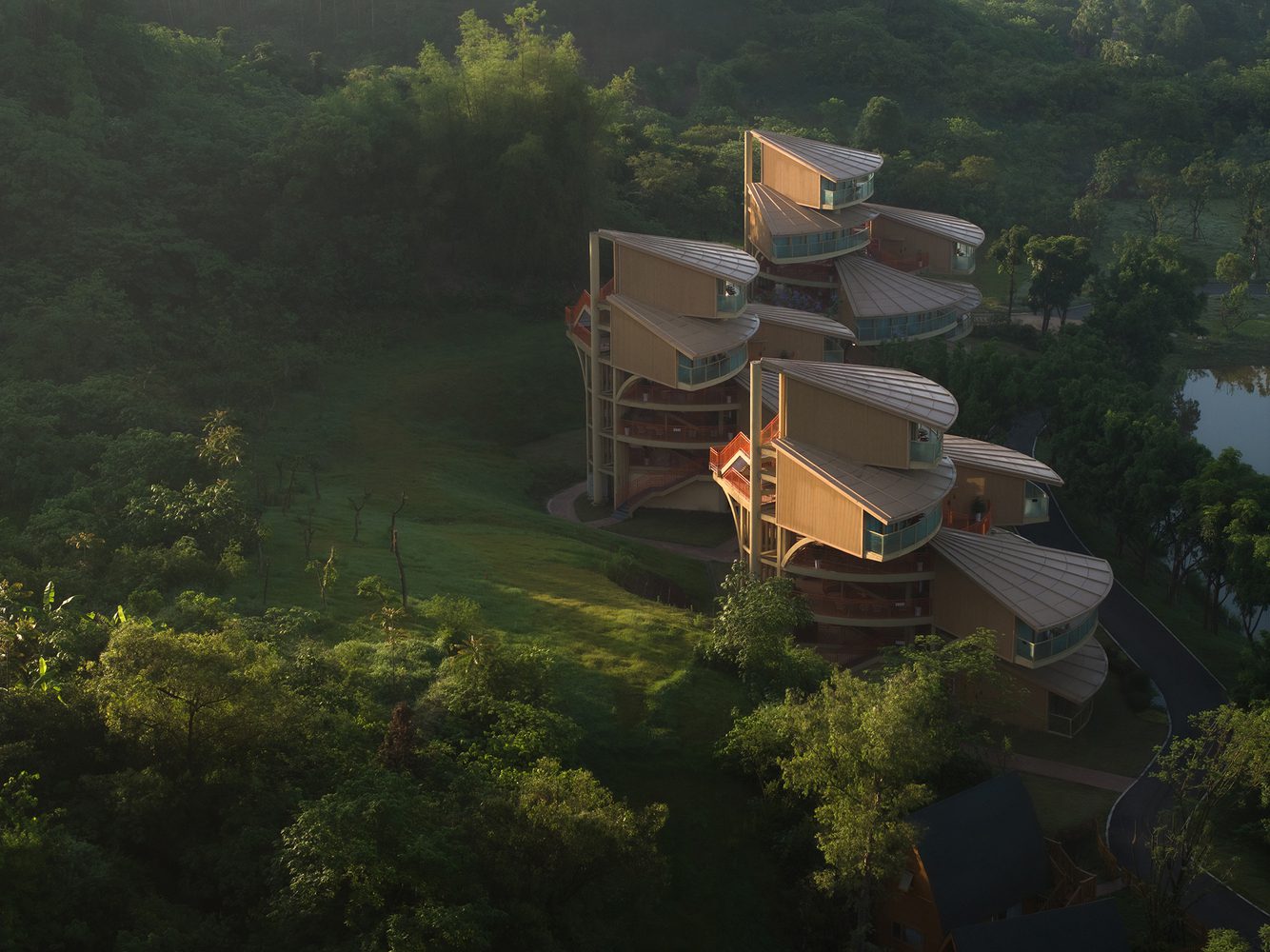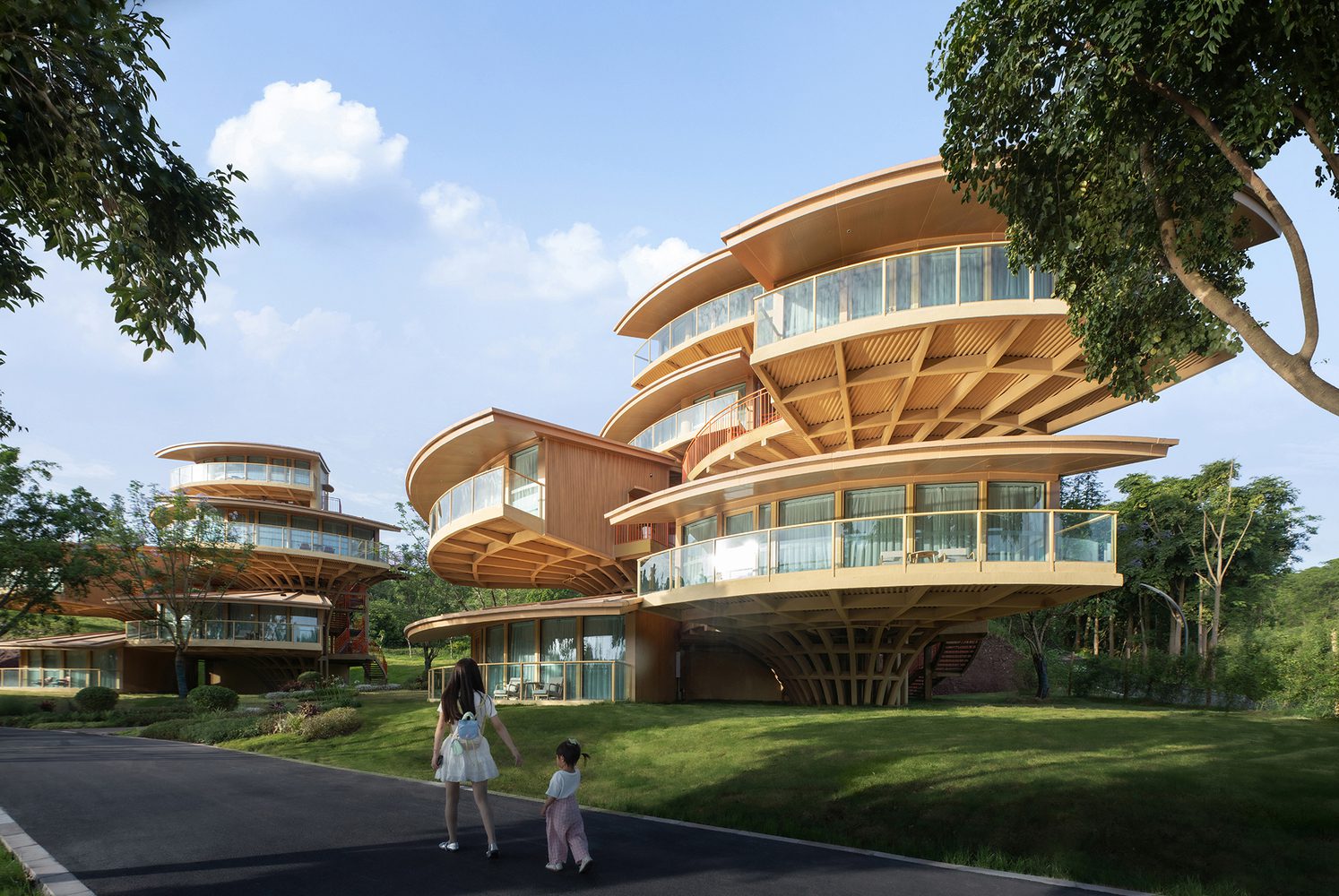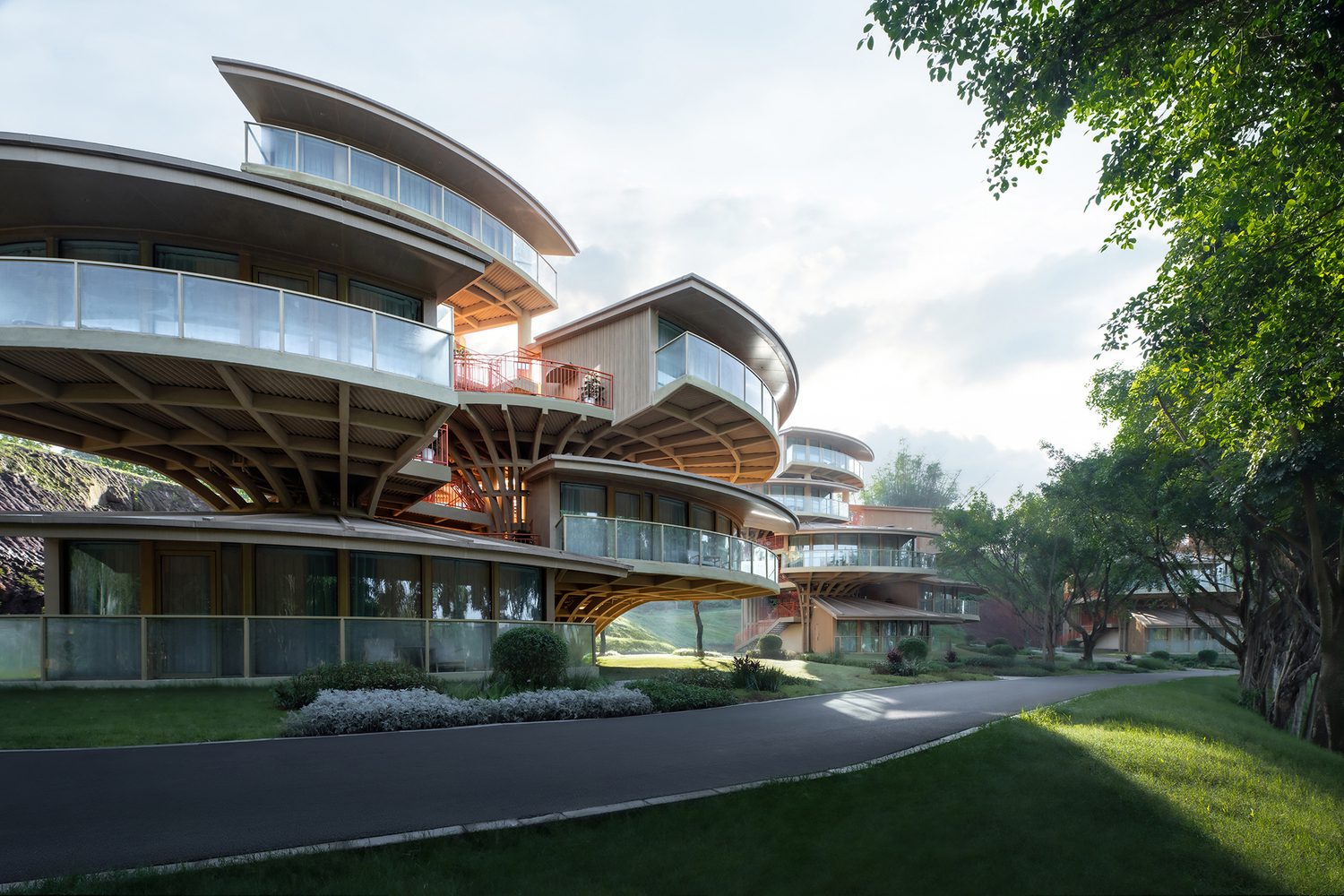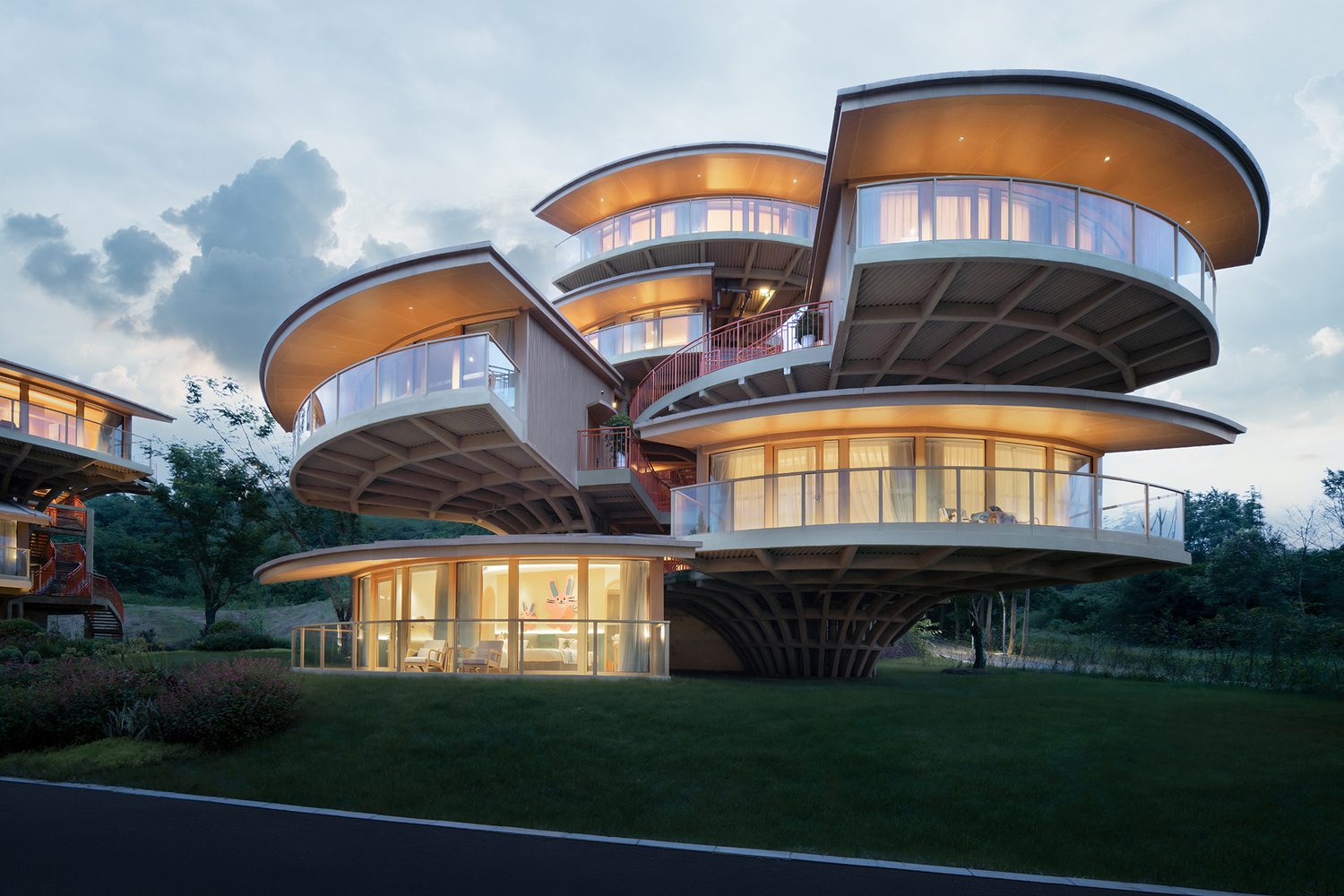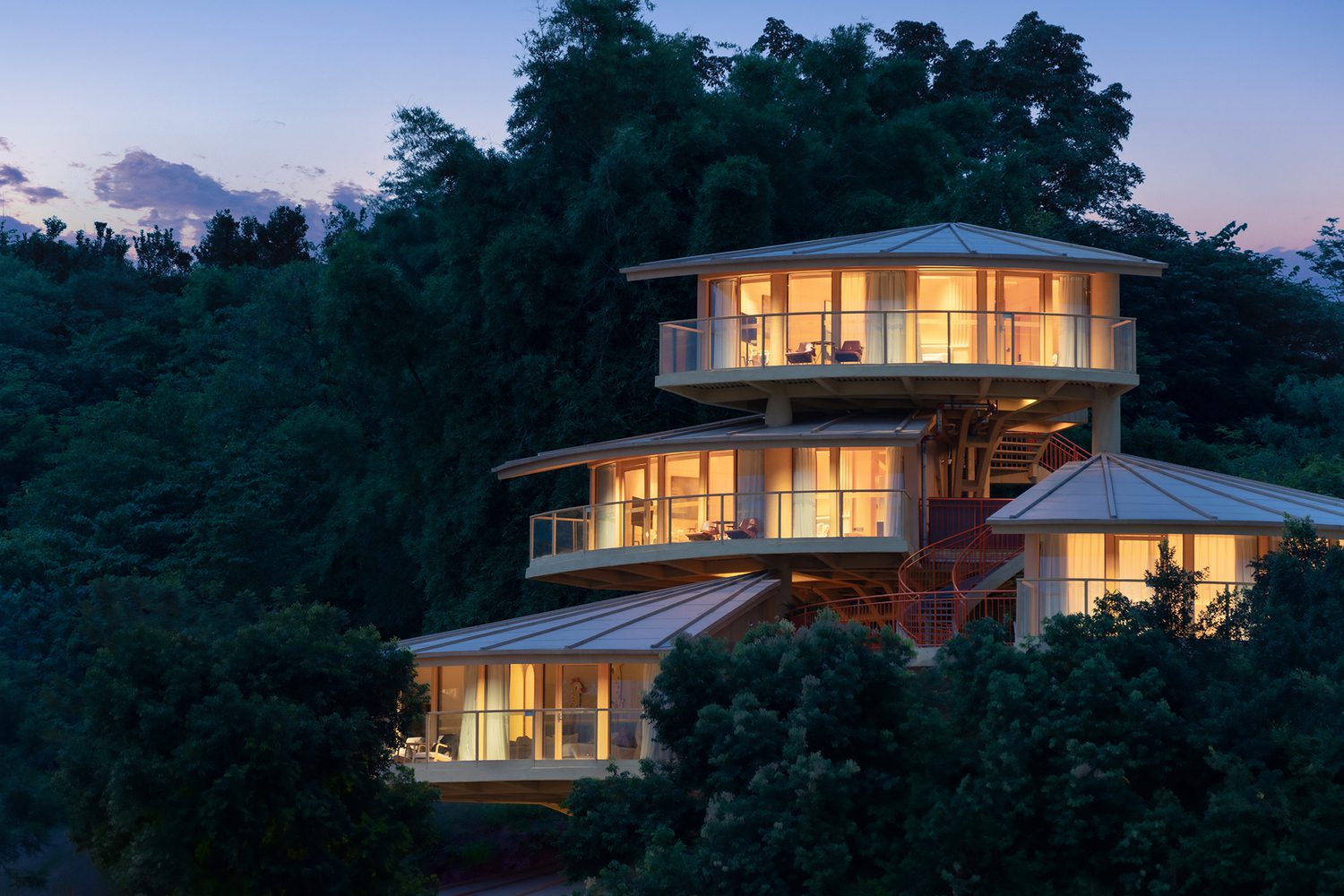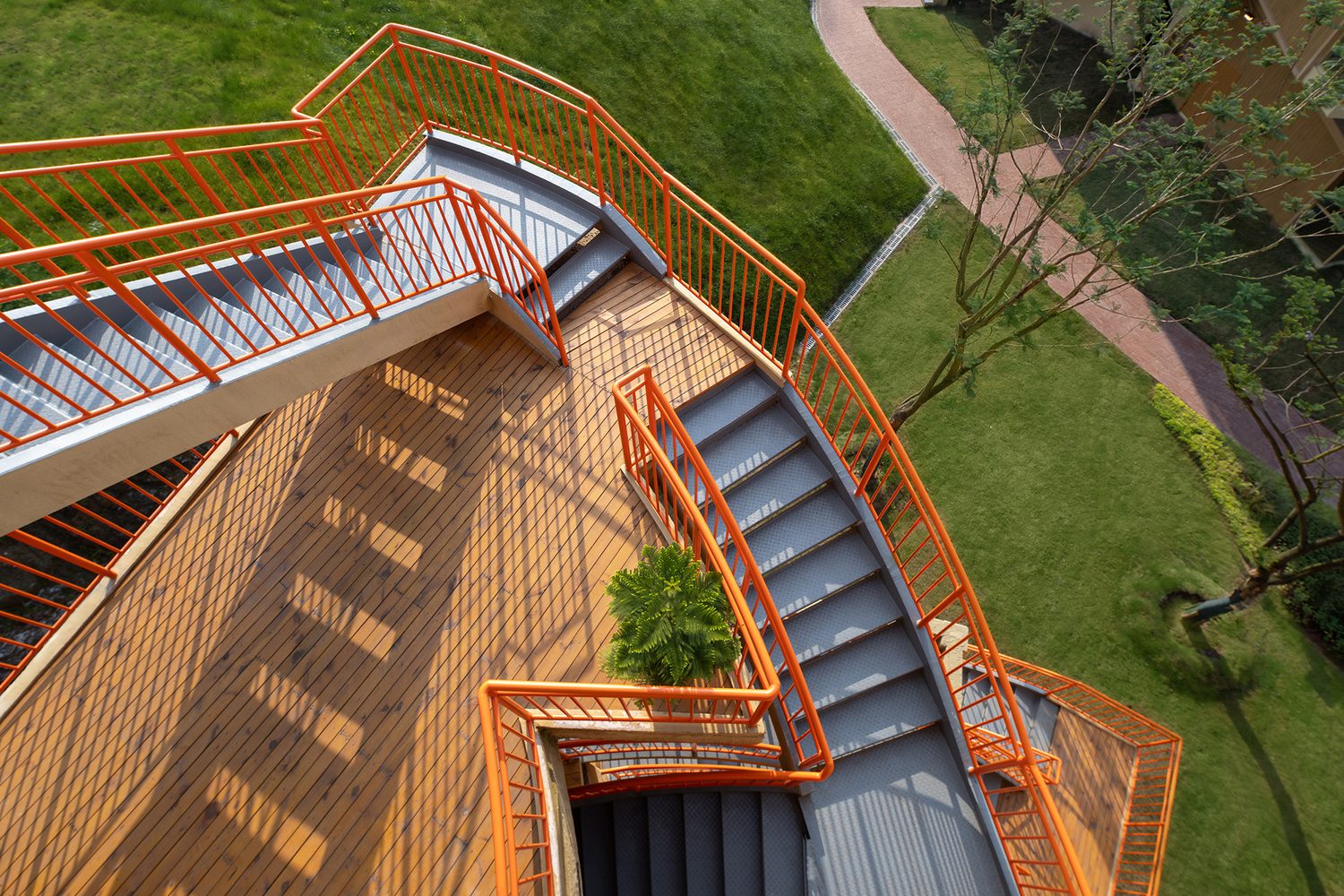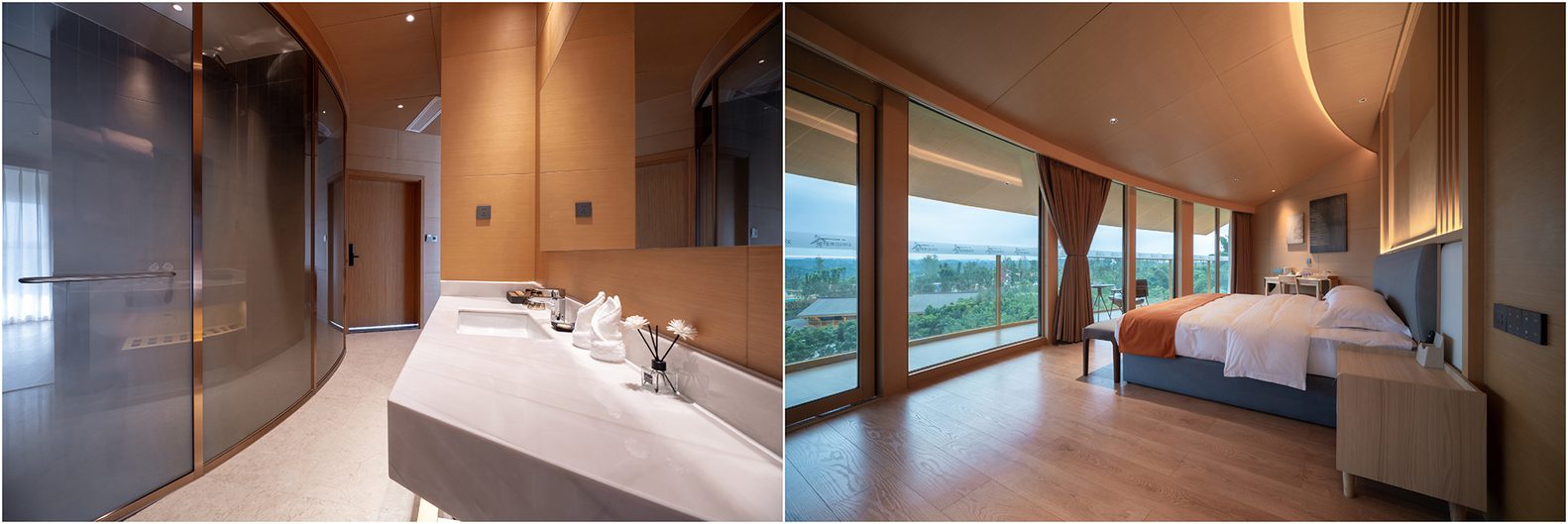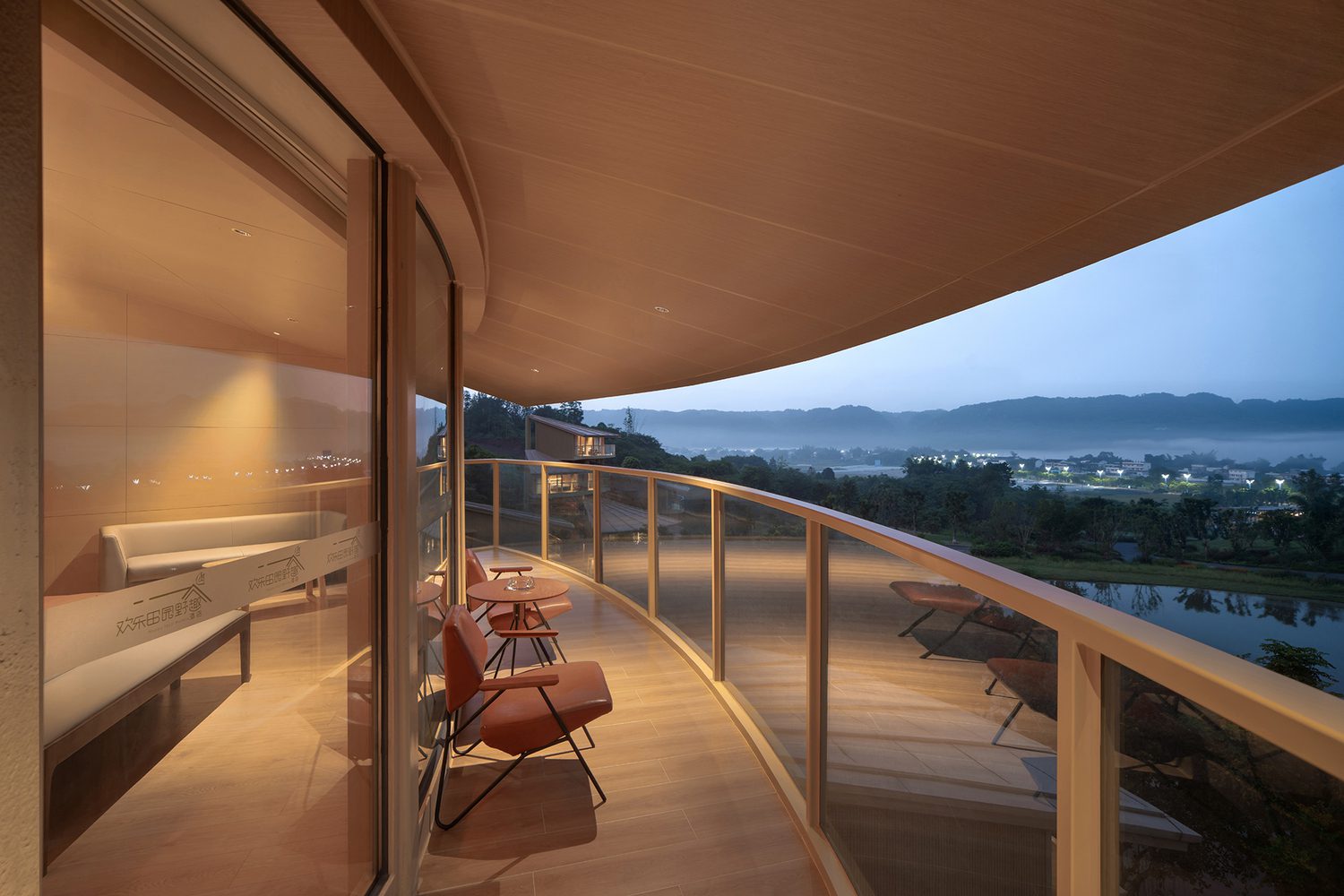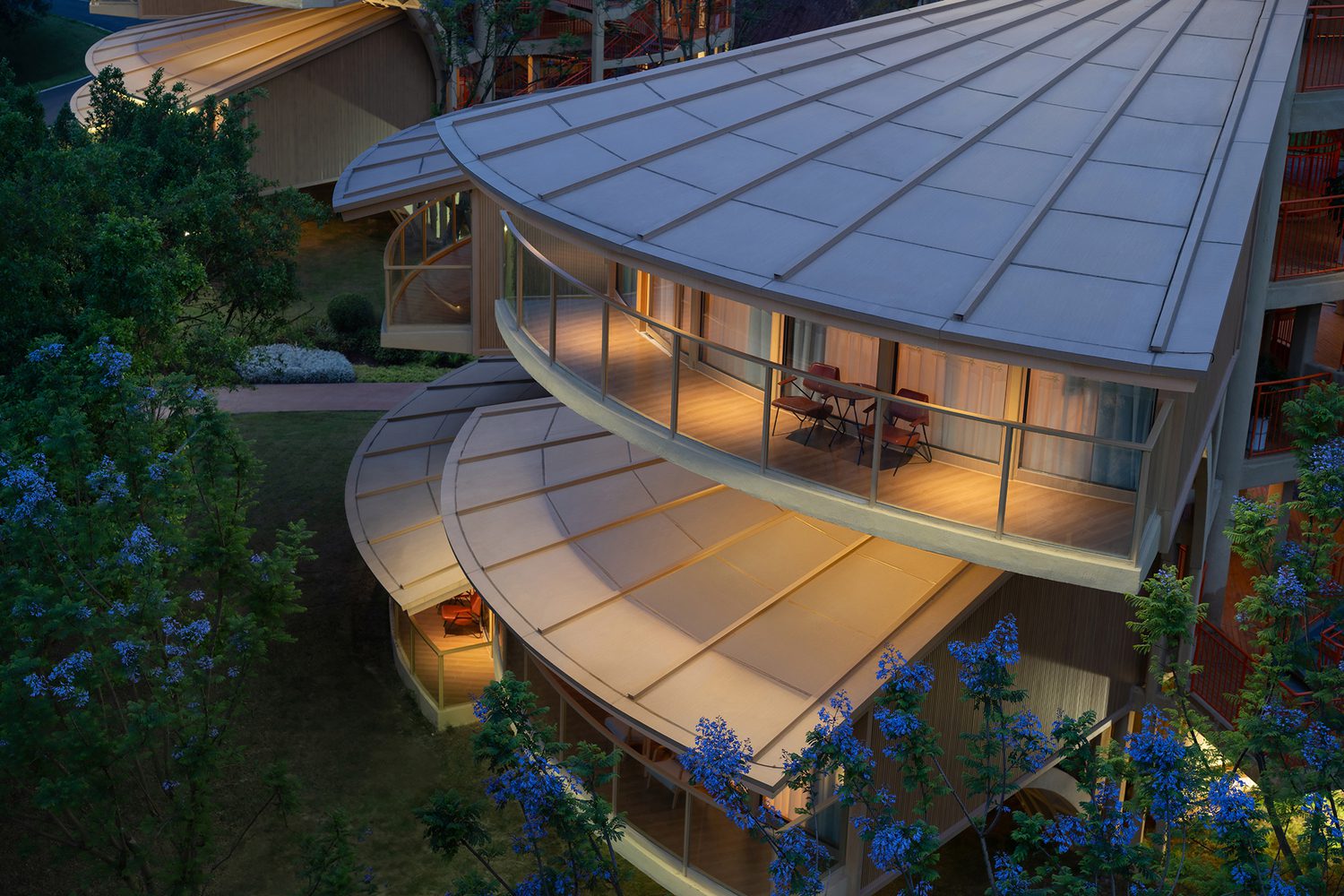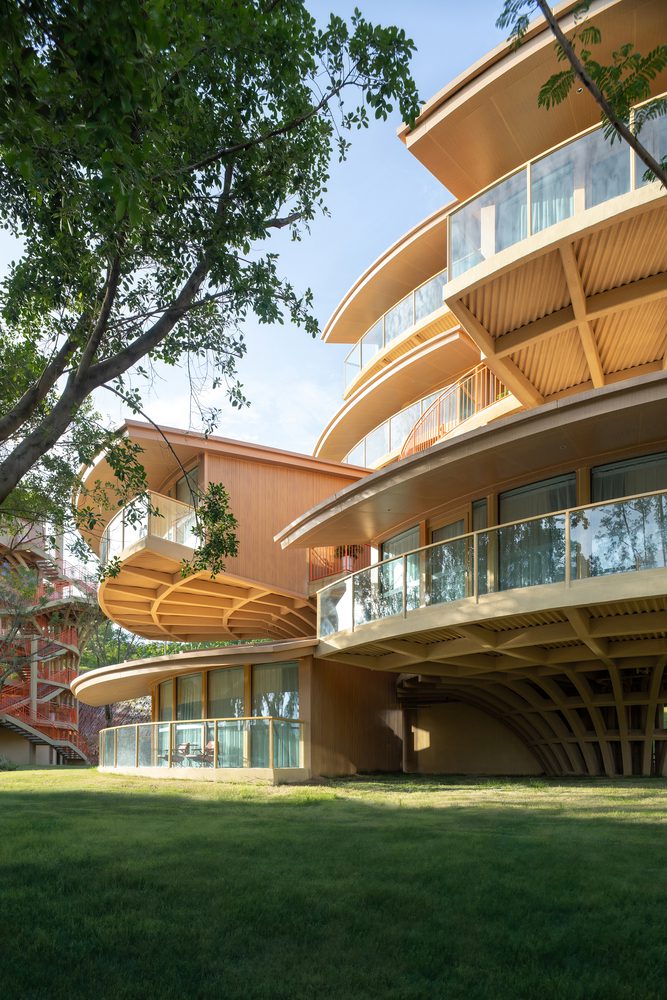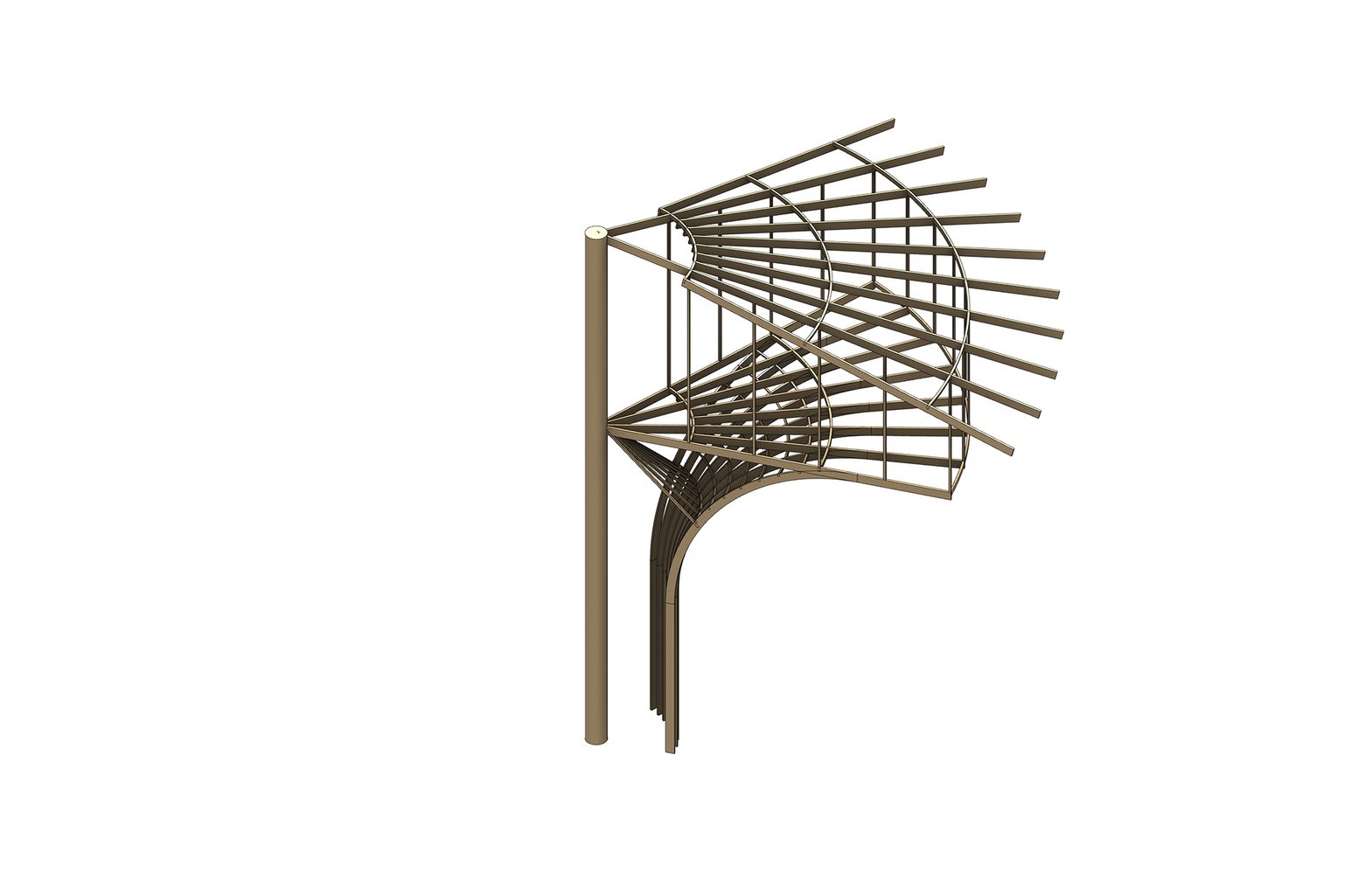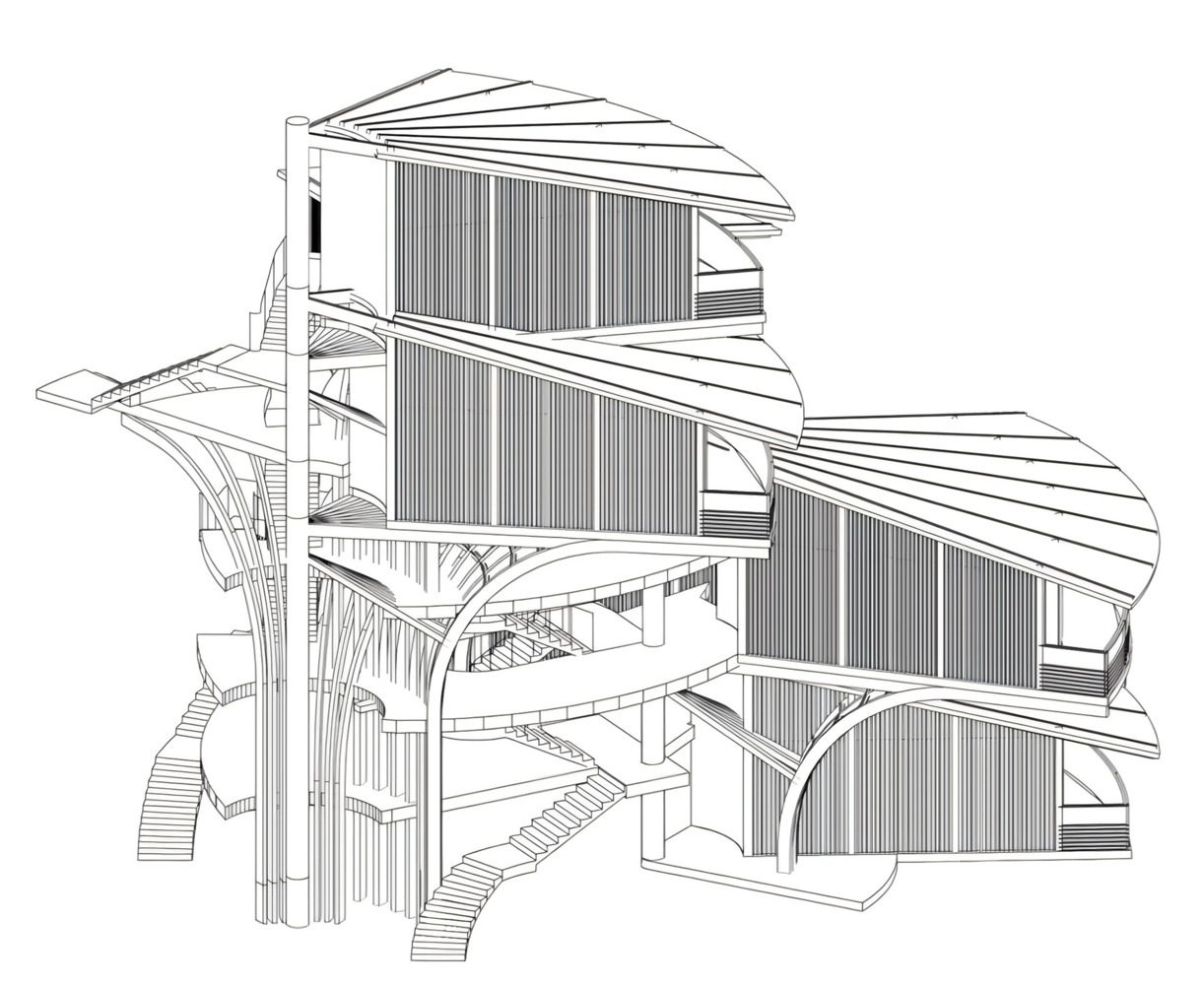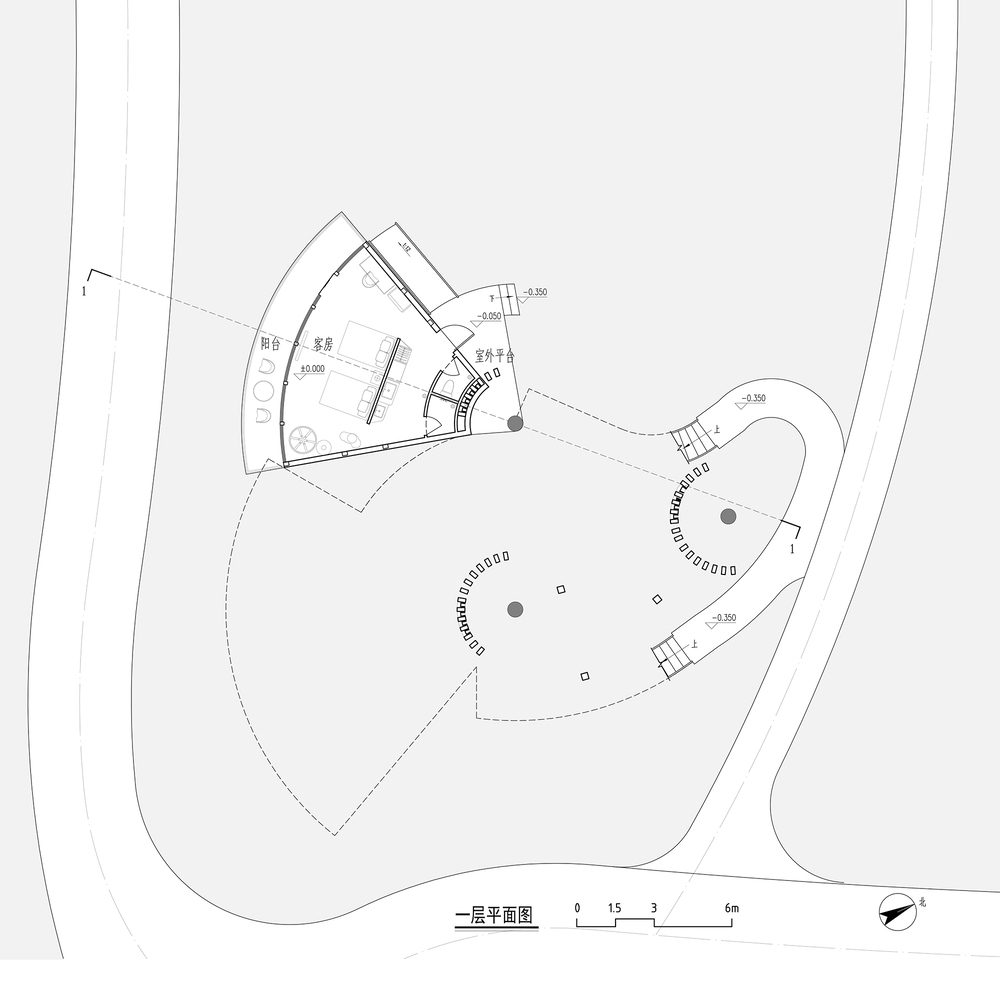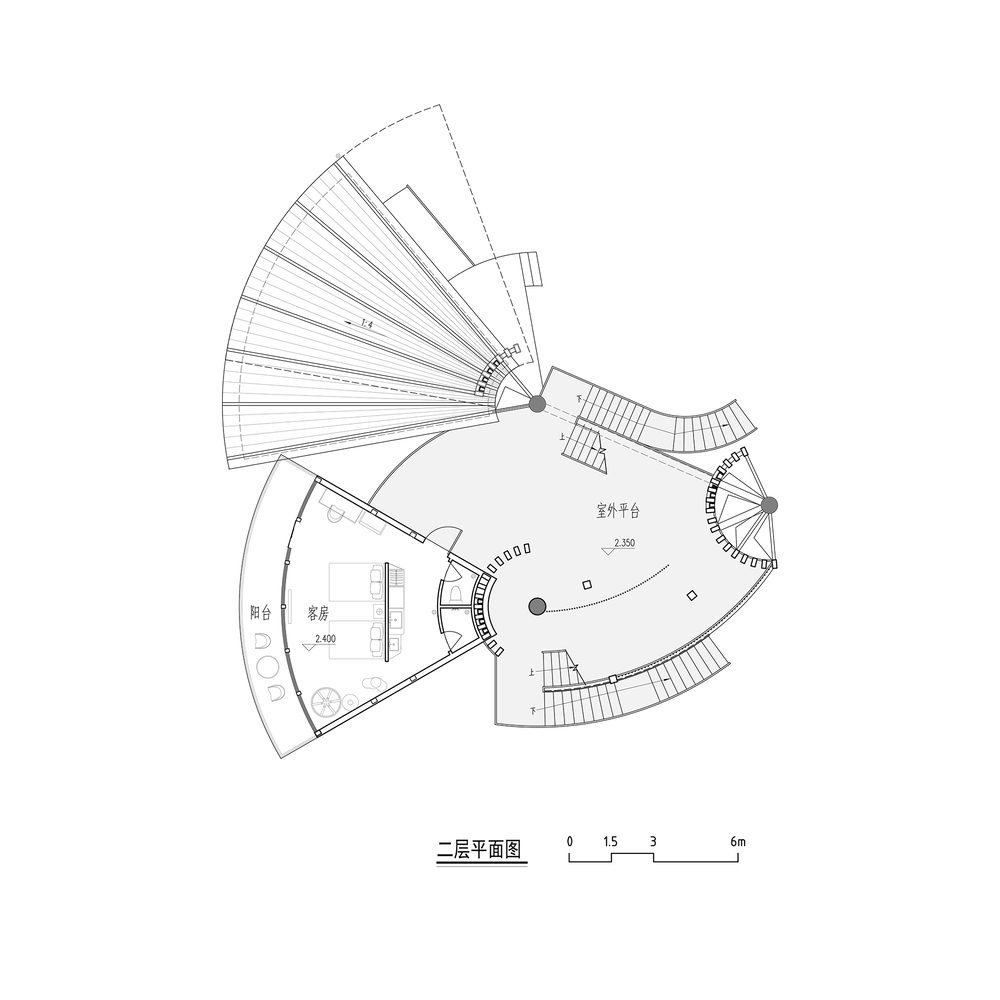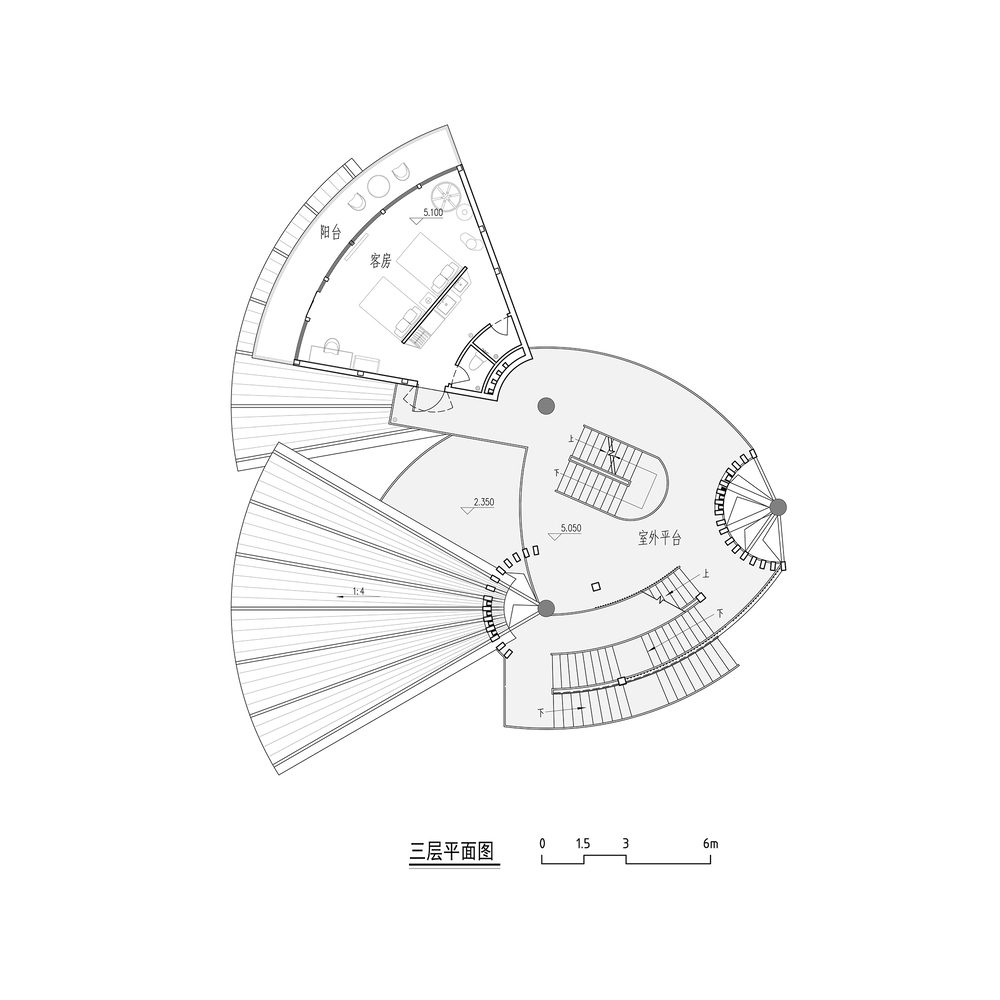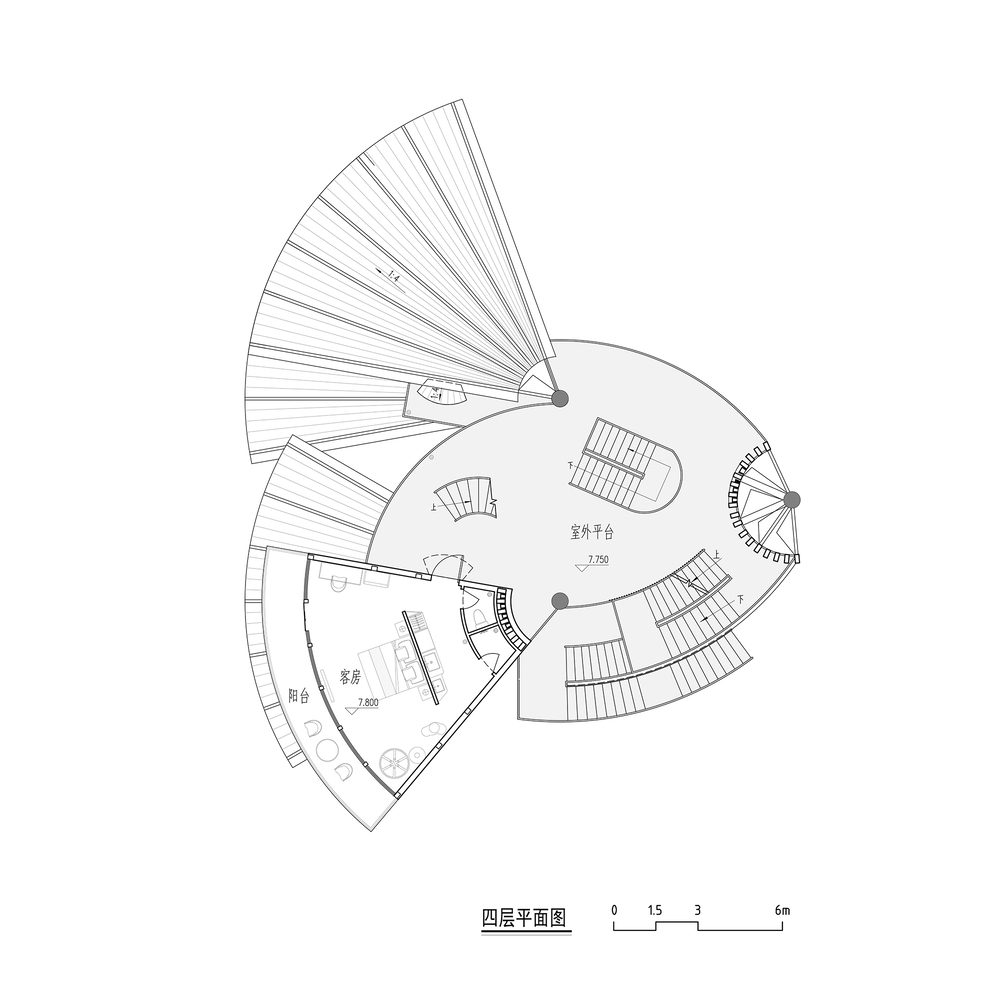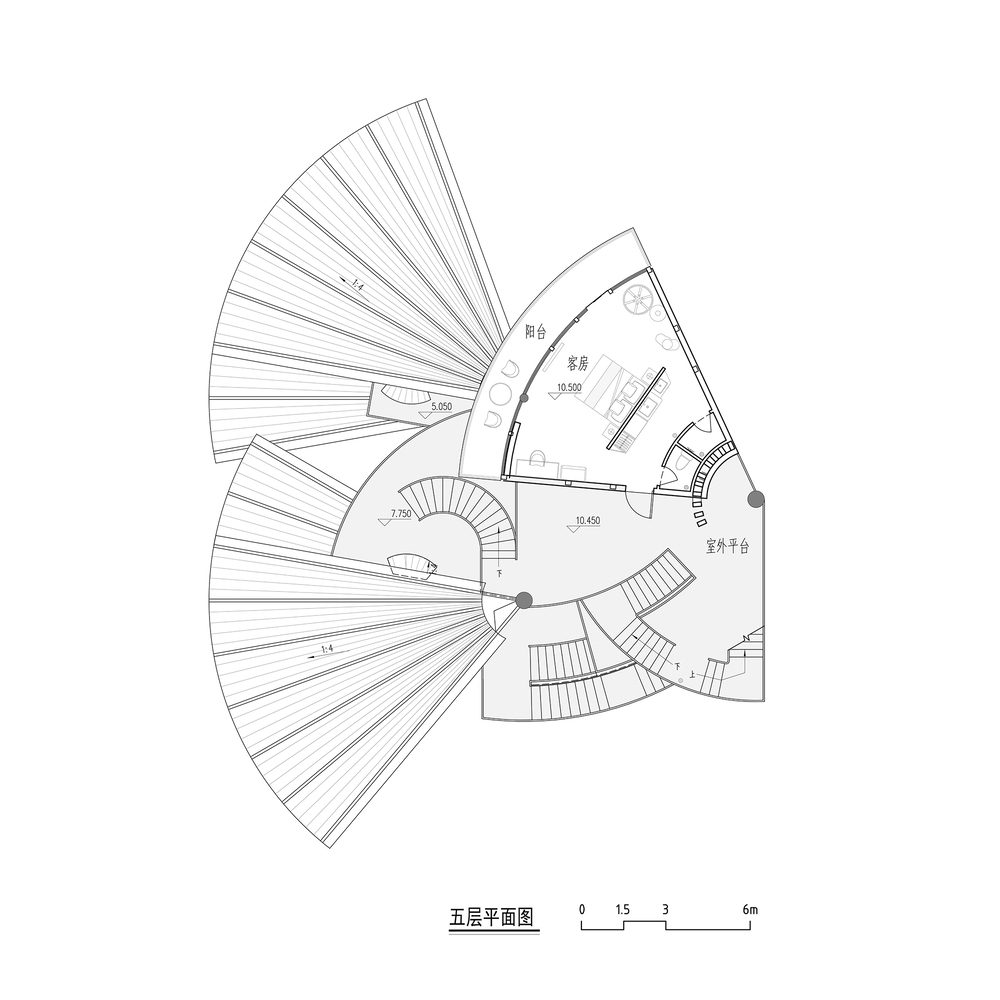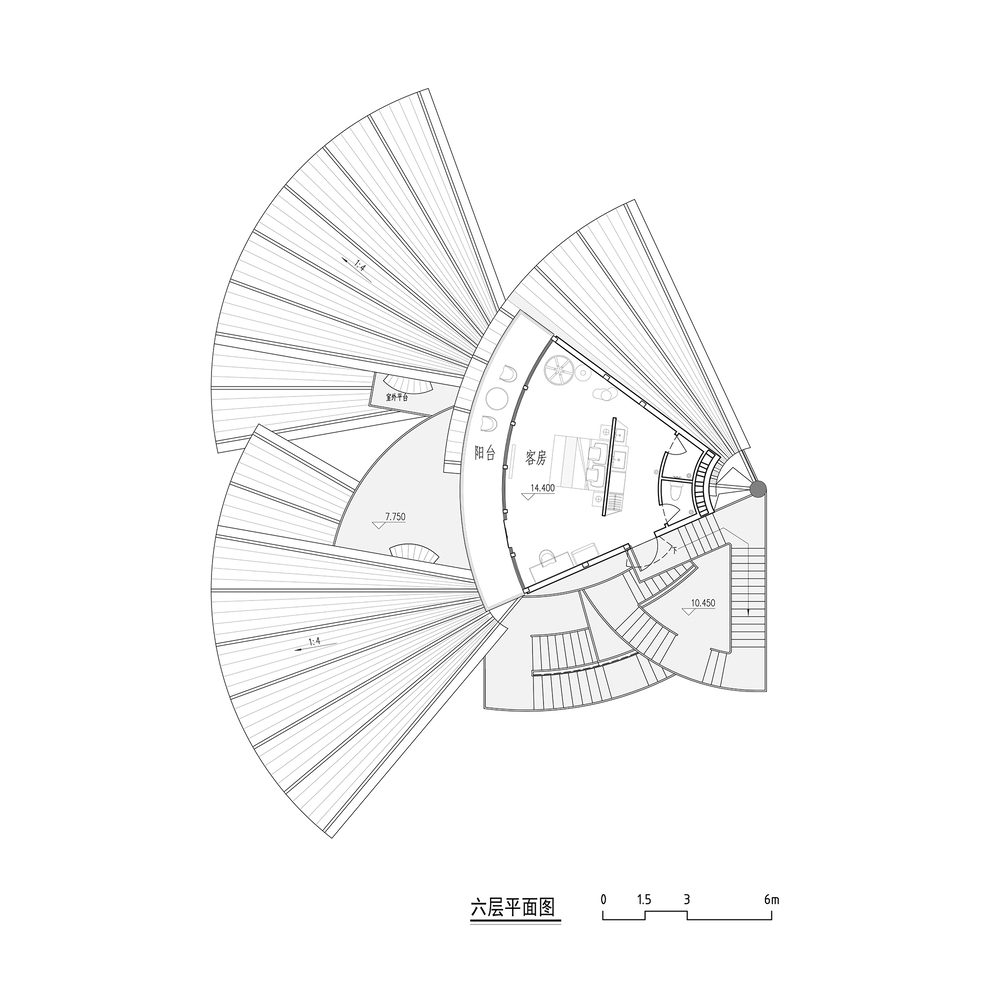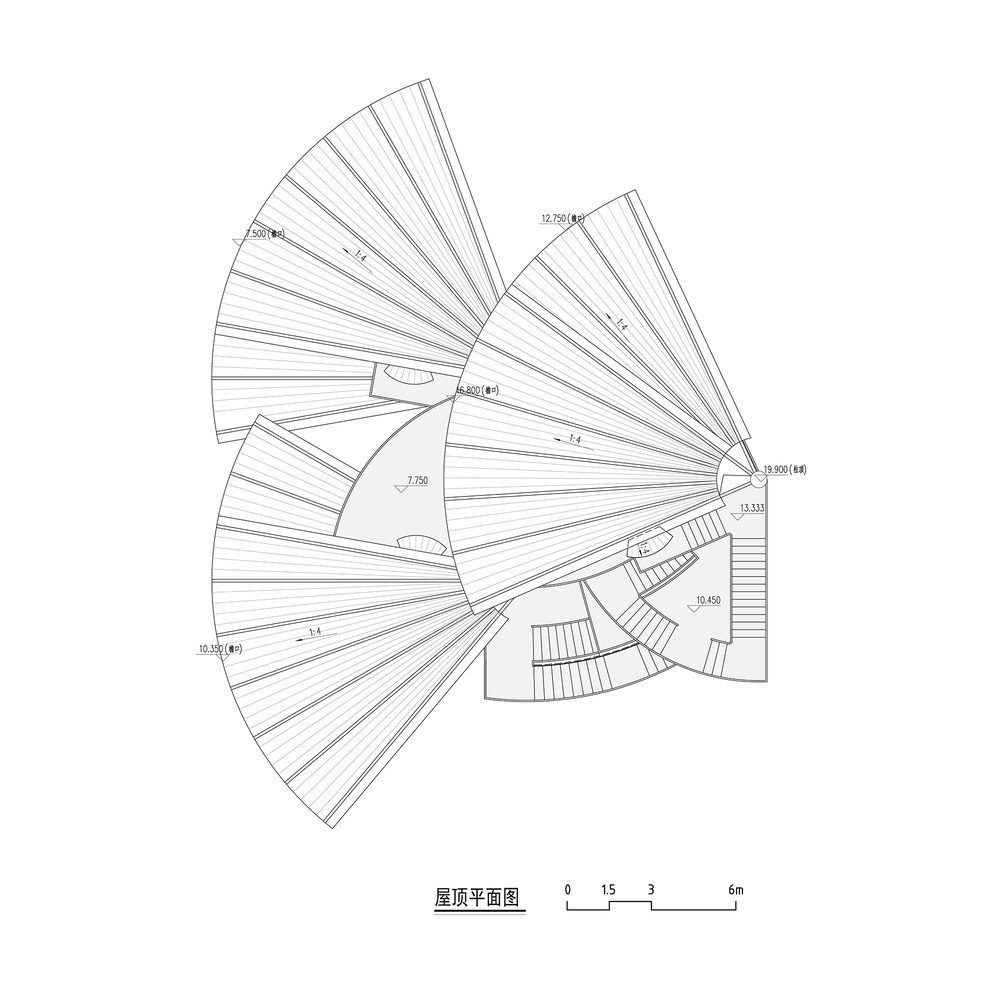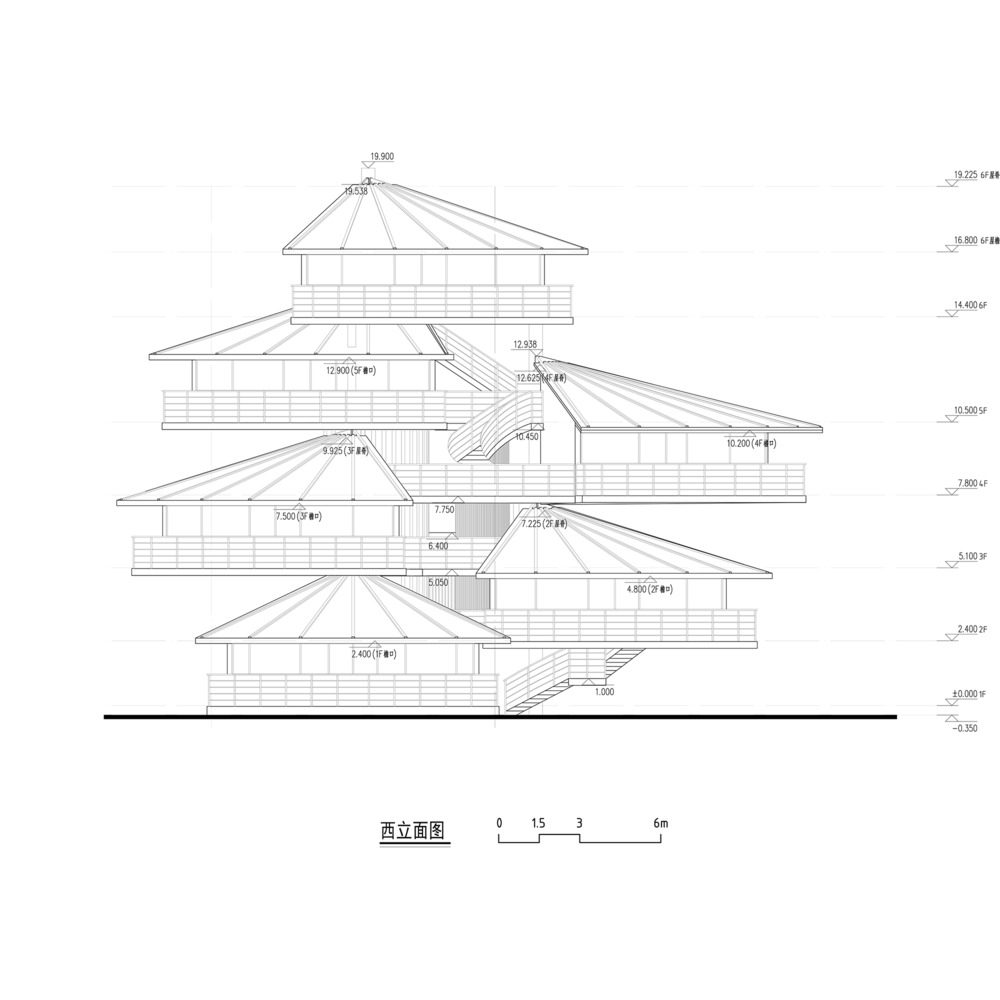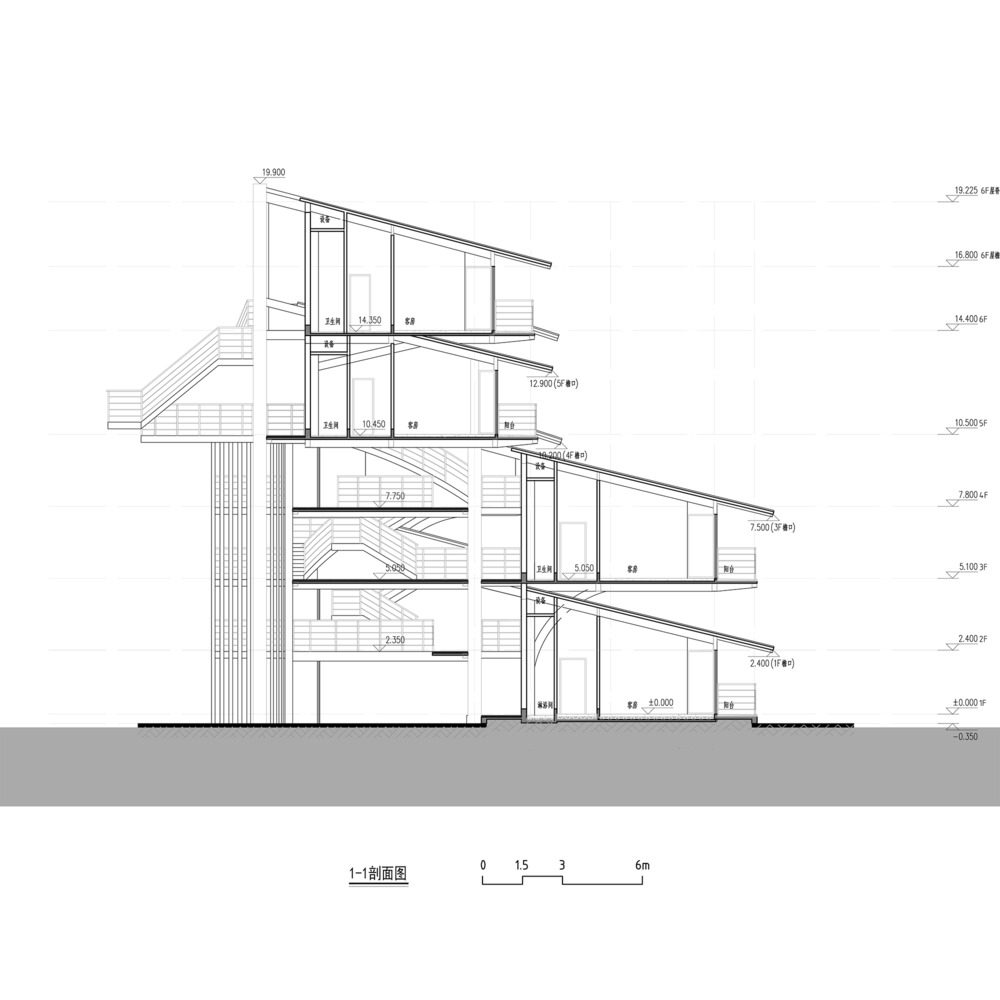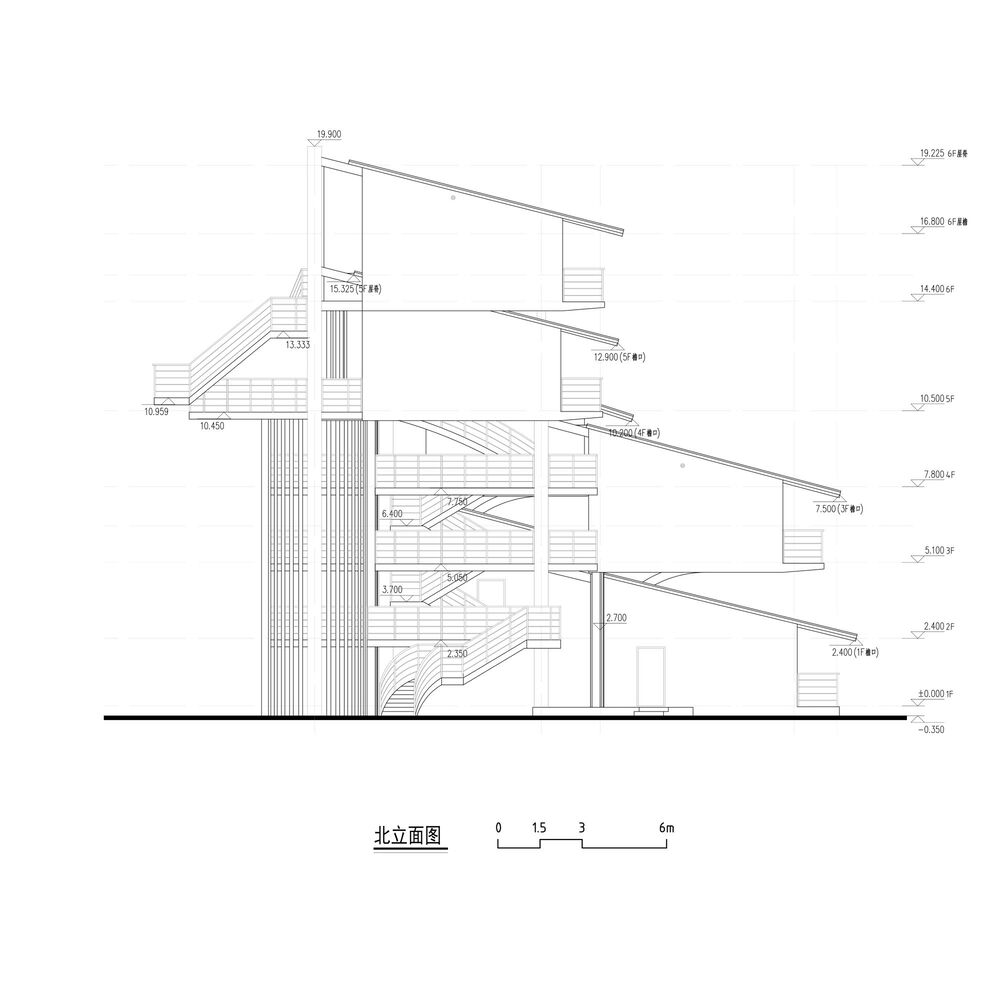The trees come up to my window like the yearning voice of the dumb earth. —Stray Birds by Tagore.
Nanxi Happy Pastoral Wild Hotel Tree House is located in Nanxi District of Yibin City. For the designer, this treehouse is the version 2.0 of the treehouse product, and the version 1.0 of which is the treehouse of Hangzhou Xianghu Senbo Resort Hotel, which was built in 2019. Xianghu Treehouse has received an enthusiastic response in the cultural tourism market, and the construction cost has been recovered in a short period of time and continues to make profits. It has also attracted the attention and reports of domestic and international media, and has become a filming location for advertising shoots and network communication. Besides, on the well-known website of My Modern Met, an article was written to warmly recommend the Xianghu Treehouse to the world.
Subsequently, invited by the owner of Yibin Nanxi, WH studio undertook the design task of designing the new product of the treehouse. With the support of the owner, the designer carried out a brand new exploration of Treehouse 2.0. The version 1.0 highlights the integration with natural elements, takeing the original imagery of “nest”; Version 2.0 emphasizes abstract organic and suspended states, especially inspired by the “structure of leaves”. The leaves of plants are probably the most prevalent biological appearance on Earth, covering the largest surface as organisms. From a structural point of view, almost all leaves (except phytoplankton) are cantilevered, and the contradiction that needs to be resolved is that larger cantilevers bring not only greater exposure to light, but also greater vulnerability to wind and rain.
Over the course of a long evolutionary process, which serve to provide structural support for the leaf while delivering nutrients. Leaf veins can be classified botanically into three main types: forked, reticular, and parallel. Parallel veins are mostly found in slender leaves, such as bamboo leaves; The reticular vein is composed of the main vein and the secondary vein, which is a more common type. The forked vein is a uniform forked branch of the leaf vein after it emerges from the leaf base. Among them, the forked veins are an ancient type, which is rare in seed plants, and the most typical representative is Ginkgo biloba.
From the viewpoint of the designer, the ginkgo biloba leaves have a “classical elegance”. As one of the oldest surviving tree species, Ginkgo biloba is known as the “living fossil of the plant kingdom”, whose form has been maintained for more than 100 million years and has survived countless vicissitudes and mass extinction events. The leaves of ginkgo biloba are fan-shaped, with a simple and clear vein structure and well-proportioned proportions, achieving a perfect balance between receiving sunlight and resisting strong wind and rain. The basic unit of Nanxi Tree House is modeled after ginkgo biloba, and its structural form resembles a forked vein, which is evenly dispersed outward from the root vein, supporting a fan-shaped plane. Similar to the proper staggering of the top and bottom of the leaves to allow for maximum light reception, the treehouses are arranged in staggered guest rooms at different heights, broadly facing the main landscape but at different angles.
The structure and space of each unit are independent of each other, which not only presents a natural and organic state, but also avoids the interference caused by the slightest fluttering of the large cantilever steel structure. Just as the trunk of a tree is rooted in the earth with the branches and leaves stretch out to the sky, the tree house as a whole is framed by three steel columns and main beams, forming a stable triangular structure that carries most of the load of the whole building. A cluster of leaf-veined structural columns plays an important role in supporting the cantilevered floor, and its fan-shaped base and the fan-shaped slope of the roof, as well as the small steel columns (including the window frames) in between, form a suspended structural unit. The fan-shaped floor plan of the guest room units fits perfectly with the view needs of the treehouse, and the interior space composition is simple and clean. The inner section lends itself to a sense of privacy and scale to the bathroom space. A separate straight wall separates the entrance space from the living space, and forms a circular flow, while the curved balcony on the outside, approximately 12 meters in length, provides an unobstructed view.
The foliage is light and tough, with slender curved columns and large-scale cantilevers creating a sense of easy floating. Although the building itself does not directly utilize specific tree elements, it still gives the occupants a natural atmosphere of “perching on the branches and floating in the sky”. Each of the three buildings contains six guest rooms at different elevations, with the highest floor level being 14.4m. The construction drawing review department required that each treehouse must be equipped with two evacuation stairs, which brought great challenges to the form and spatial treatment. In the final scheme, two staircases are located inside and outside the main frame, providing two different climbing paths, one hidden and one visible.
The outdoor decks on each floor are of different shapes, providing outdoor communication and parent-child activity space for the guest room units. The ancients said, “I want to go back by the wind, but afraid of the loneliness in the heaven palaces”. The heaven palaces may be too high and cold, and the tree house experience which is natural, neither a cluster nor a solitary place may be more pleasant. One can look over by the railing, listen to the chirping of birds and the breeze passing through your ears; Or friends can drink in nature, and the neighbors are in harmony. In a pleasant reverie, they can get a glimpse of the free realm of “living with heaven and earth and being one with all things”.
Project Info:
-
Architects: WH studio
- Country: Yibin, China
- Area: 1689 m²
- Year: 2024
-
Photographs: Prism Image
-
Lead Architects: Wang Hui


